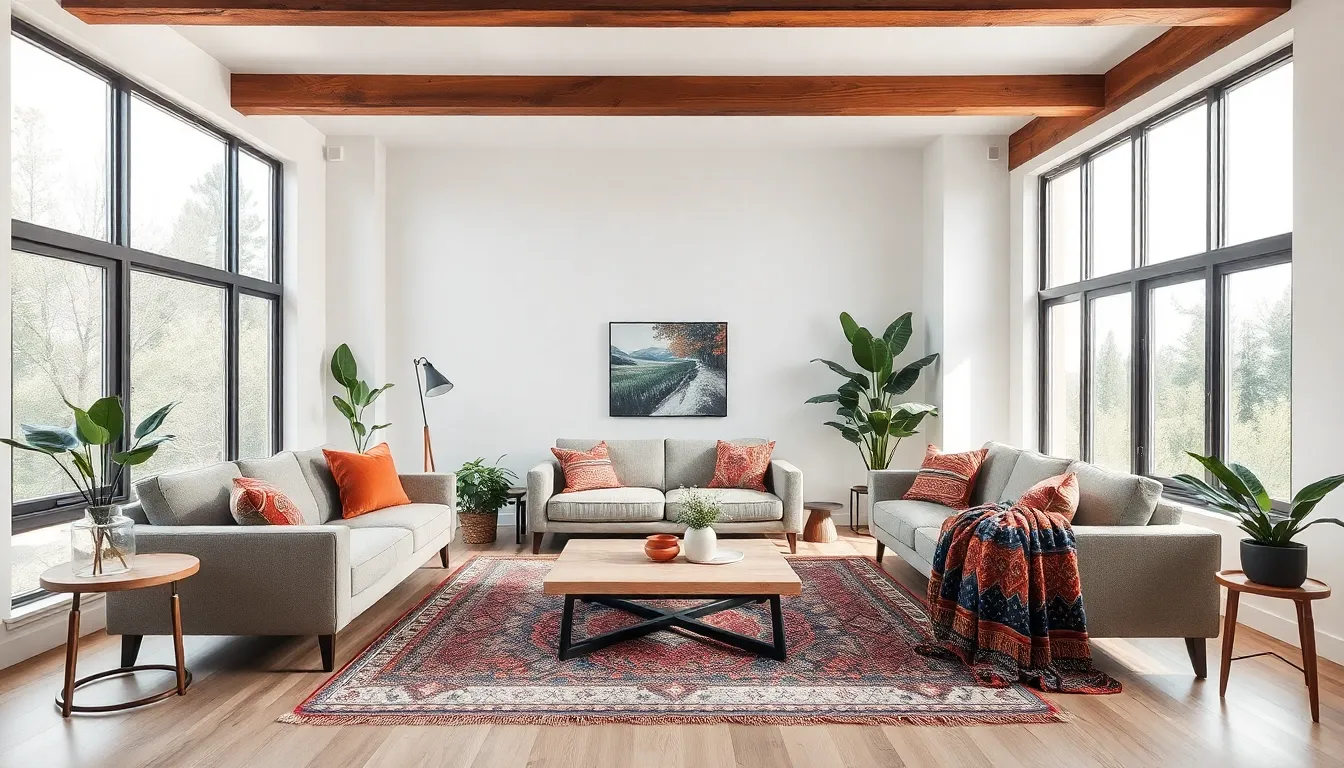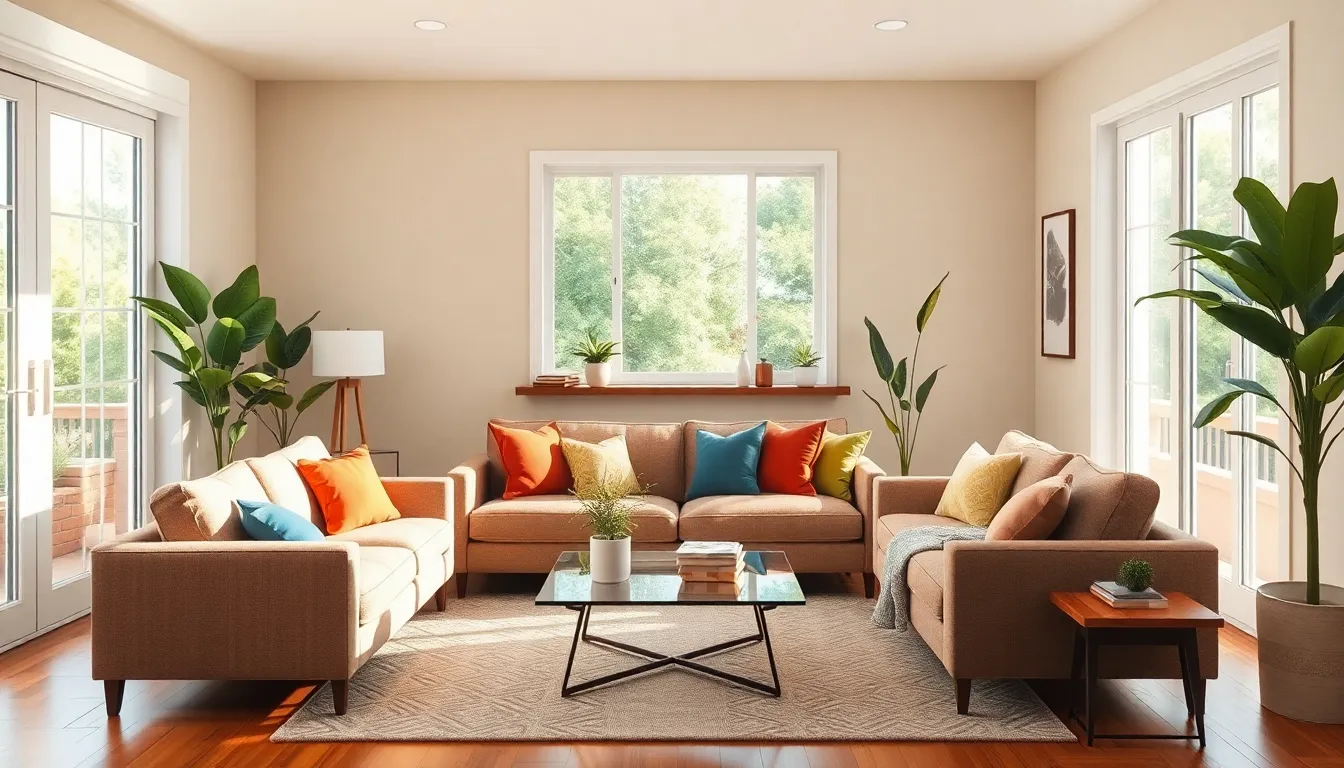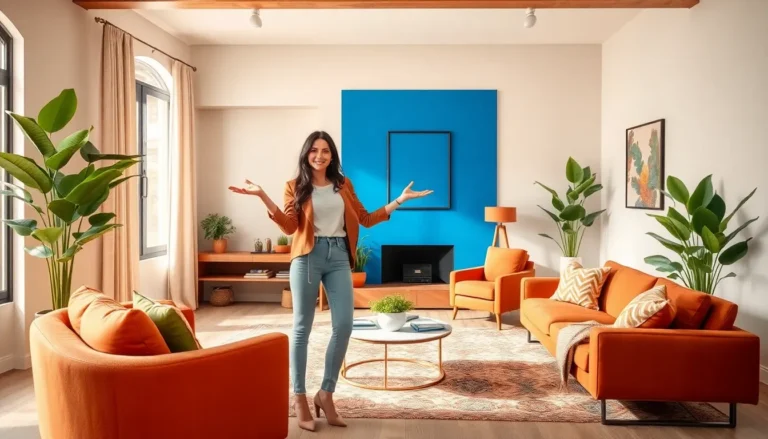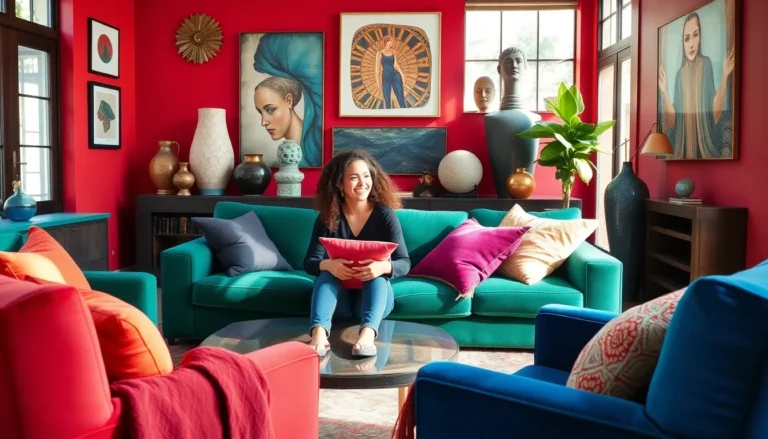Table of Contents
ToggleHome aesthetics isn’t just a fancy term for making your space look pretty; it’s the secret sauce that turns a house into a cozy haven. Imagine walking into a room that feels like a warm hug, where every corner whispers, “Welcome home.” With the right touches, anyone can transform their living space from drab to fab, without needing a degree in interior design or a bank account that rivals a small country’s GDP.
Understanding Home Aesthetics
Home aesthetics create a cozy and inviting environment. This concept revolves around how a space looks and feels, impacting overall well-being.
Definition and Importance
Home aesthetics refers to the visual appeal and design elements that influence a living space. They encompass colors, furniture, décor, and layout that harmonize to create an inviting atmosphere. Prioritizing home aesthetics enhances comfort, promotes relaxation, and boosts mood. Clear visual organization allows for seamless interaction within the space. Good aesthetics make homes more enjoyable, showcasing personality and style. It encourages creativity and can even increase property value, making it an important consideration for homeowners.
Key Elements of Home Aesthetics
Several key elements shape the aesthetics of a home. Color schemes define mood and ambiance through warmth or coolness. Furniture selection impacts functionality and style, while layout can optimize space efficiency. Lighting plays a critical role, influencing both appearance and atmosphere. Decorative items like artwork, plants, and textiles introduce personality and charm. Each of these elements contributes to a cohesive design, enhancing the overall aesthetic appeal. Balancing these aspects fosters a harmonious environment that feels personal and inviting.
Popular Home Aesthetic Styles

Home aesthetics feature various styles that allow individuals to express their personality through design. Each aesthetic adds a unique touch to living spaces.
Modern Aesthetic
Modern aesthetics focus on clean lines and simplicity. This style often utilizes a neutral color palette combined with bold accents. Furniture tends to have sleek shapes, often made from materials like metal and glass. Spaces emphasize functionality by minimizing clutter while maximizing open areas. Incorporating natural light enhances the streamlined look, creating an airy feel. Through these elements, modern aesthetics deliver sophistication and comfort.
Minimalist Aesthetic
Minimalist aesthetics prioritize simplicity and functionality. This style accentuates a decluttered approach, showcasing only essential items. Neutral colors, such as whites and soft grays, dominate the color scheme. Furniture pieces are often multipurpose, helping to maintain open space. Each decorative item serves a purpose, contributing to a serene environment. By embracing fewer elements, minimalist aesthetics create relaxation and clarity within homes.
Rustic Aesthetic
Rustic aesthetics draw inspiration from nature and rural settings. Natural materials, like wood, stone, and leather, dominate this design style. Color schemes include earthy tones, which produce a warm and inviting atmosphere. Textured fabrics enhance comfort, often found in cozy throw pillows and blankets. Vintage furniture pieces contribute character, showcasing the passage of time. This connection to nature fosters tranquility and warmth in any living space.
Bohemian Aesthetic
Bohemian aesthetics celebrate creative expression and eclectic design. This style combines vibrant colors, mixed patterns, and diverse textures for a lively look. Furniture sourcing often includes vintage or artisanal pieces, contributing to a global vibe. Layering fabrics, like rugs and tapestries, creates an inviting and relaxed atmosphere. Greenery and plants breathe life into spaces, enhancing the boho feel. Through these elements, the Bohemian aesthetic encourages individuality and personal storytelling.
Color Schemes in Home Aesthetics
Color schemes create a foundational element in home aesthetics, influencing both visual harmony and emotional impact. Selecting the right palette serves as a crucial step in designing an inviting space.
Choosing the Right Palette
When choosing a color scheme, consider personal style preferences and the desired ambiance. Neutral colors, like whites and beiges, easily blend with various design styles. Meanwhile, bold hues, such as blues and reds, bring energy and character. Selecting complementary colors enhances visual interest while maintaining balance. Incorporating accent colors in décor items can provide an opportunity to express personality and creativity. Crafting a cohesive palette requires careful consideration of the interplay between shades.
Impact of Color on Mood
Colors significantly influence mood and emotional well-being in any space. Warm colors, such as yellows and oranges, evoke feelings of warmth and positivity, making areas feel comfortable and energetic. Cool colors, like greens and blues, create a sense of calm and tranquility, ideal for relaxation zones. Research indicates that using color strategically can impact cognitive function and overall productivity. In bedrooms, softer tones help promote restfulness, while vibrant hues in living areas can enhance sociability and interaction. Understanding these effects guides choices that foster a desired emotional atmosphere.
Furniture and Decor
Furniture and decor play a crucial role in shaping home aesthetics. Selecting the right pieces enhances comfort and style throughout the living space.
Selecting Pieces that Enhance Aesthetics
Choosing furniture involves considering styles, materials, and colors that align with personal preferences. Comfortable seating, functional tables, and storage solutions contribute to both utility and visual appeal. Incorporating statement pieces can create focal points, attracting attention and encouraging conversation. Decorative items, such as artwork and plants, add character and warmth to the environment. Mixing textures, like wood and metal, enriches visual interest, fostering a layered look. Prioritizing pieces that reflect individual tastes can transform an ordinary space into a distinctive haven.
Importance of Balance and Proportion
Balance creates harmony within a room. Symmetrical arrangements often evoke a sense of stability, while asymmetrical layouts can introduce dynamic energy. Proportion refers to the relationship between the size of furniture and the dimensions of the space. Oversized pieces can overwhelm smaller rooms, while petite furnishings may get lost in expansive areas. Maintaining proportion ensures that every element complements one another, contributing to a cohesive aesthetic. Striking the right balance and proportion enhances comfort and functionality, allowing for effortless movement and interaction within the space.
Home aesthetics play a vital role in shaping a living space that resonates with comfort and personal expression. By thoughtfully selecting colors, furniture, and decor, anyone can create an inviting atmosphere that reflects their unique style. Embracing various aesthetic styles allows individuals to craft environments that not only enhance visual appeal but also promote emotional well-being.
Focusing on balance and proportion ensures that every element works together harmoniously. This approach not only elevates the overall design but also fosters a sense of tranquility and inspiration. Ultimately, investing time and thought into home aesthetics transforms ordinary spaces into welcoming havens that enrich daily life.







